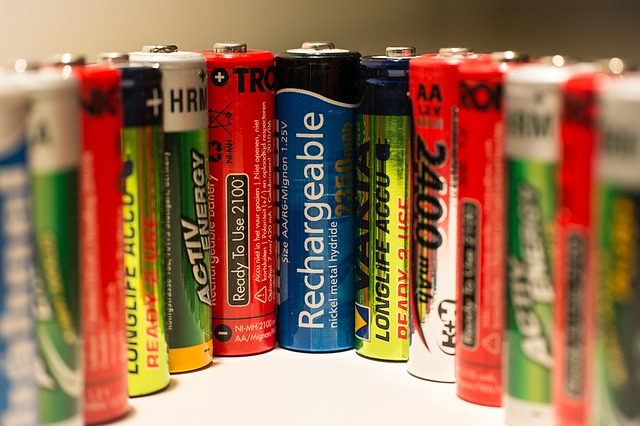Indian EV Sector Should Seek Non Lithium Solution to Avoid Depending on China
If the Indian Electric Vehicle (EV) sector doesn’t devise a local non lithium solution, there will be no choice but to depend on China, who is the current world champion in ion lithium batteries.
As India-China relations escalated in the last month, the government has banned 58 Chinese apps, which include, WeChat, Helo, Vigo Video, Bigo Live, Likee, CamScanner, and TikTok. The government has cited the reason that these apps pose a ‘threat to sovereignty and integrity’ because of transmitting Indian user data to foreign servers.
While India strives to compete with China in trade and manufacturing, even eyeing the business exiting the country owing to the pandemic, India has to think up out-of-the-box approaches to business and innovation to stay ahead.
The Tech Panda spoke to Robinder Sachdev, President of Imagindia, a non-partisan independent think tank and research center with a mission to promote the image and imagination of India.

Robinder Sachdev
India should aggressively do R&D into non-lithium solutions. In the process become Aatmanirbhar, create new technologies, material sciences, and metallurgy. The spillovers of these new technologies will create jobs. Convert and commercialize them
Sachdev says that India should start looking for non-lithium solutions for its EV sector, if it doesn’t want to end up depending on China.
“It’s a red flag for us. It’s good for the climate and will save us foreign exchange or reduce our dependence upon the Arab countries for oil. But where does the battery for EV come from? China controls the supply chain of lithium. Why are we walking blind into a next trap?” he asks.
Sachdev recently spoke at the virtual Horasis India Meeting, which gathered a varied group from around India and the world to discuss a post-COVID-19 situation.
Over the years, Imagindia has built strengths in research, international affairs, lobbying, image and campaign management, and NRI affairs. Their work involves a fair amount of economic diplomacy, promoting trade delegations as well as cultural and science-based diplomacy.
A Red Flag
Going ahead, Sachdev says, the world has to make certain decisions in trade direction to stay ahead in competition with China. He points out that while India and the world are moving towards EVs and clean energy, it will also lead us, once again, to depend on China.
The major components of lithium-ion batteries are chemical lithium, chemical cobalt, and spherical graphite. Currently, China controls 51% of the global total of chemical lithium, 62% of chemical cobalt, and 100% of spherical graphite. Beijing is already the global leader in sales and production of EVs, owing to their mining and manufacturing expertise, which has left even the US behind.
Read More: India and China Target the Same Slice of the Business Pie
As such, Sachdev thinks, pursuing EV manufacturing without looking at local supply of lithium-ion batteries or an alternate source is like walking into a trap of dependence. He says, India should explore non-lithium solutions urgently in order to fulfill the future of an Aatmanirbhar Bharat.
“India should aggressively do R&D into non-lithium solutions. In the process become Aatmanirbhar, create new technologies, material sciences, and metallurgy. The spillovers of these new technologies will create jobs. Convert and commercialize them,” he advises.
Impact of India China Conflict on Trade
While we hear several calls across India to boycott Chinese goods, a number of Indian government officials said that border tensions will impact trade on a very low level. However, Sachdev says that impact will definitely show. He thinks the current conflict will impact future trade for India.
“In trade and economy, definitely some patterns will change. Import will definitely change. What will also change are actually engineering projects, for example the railway project. Those projects can easily be hurt,” he says.
While India’s deficit will likely go down, the real numbers within that are not easy to determine, owing to the fact that much of the China trade comes to India via Hong Kong.
“So the numbers that the government has, and we have, are not the full reflection of the real numbers because of routing through Hong Kong,” he explains.
India is Unlikely to Get the Business Exiting China
Big US companies, like Apple, have been looking to move out of China after the COVID-19 pandemic has shown the downside of keeping manufacturing tethered to a single location. Even the Japanese government has offered a US$2.2 billion packet to Japanese companies who want to move out of China.
Sachdev says while impact on imports, consumer goods, and B2B products will deepen, supply chains will get disrupted and newer connections will form.
“Some supply chains will move out of China, no doubt. Some will actually come back to US manufacturing, because US is attracting them with a carrot-or-stick approach in the form of high taxes,” he says.
Read More: Will India’s Land Pool to Lure in Foreign Investment Pull Off?
While many of these chains may end up heading back to the US, some are looking for alternatives in Asia, for which India is striving to be a good candidate. However, Sachdev doesn’t feel very optimistic about this.
“I think that India will not benefit much from that. Our infrastructure and ease-of-doing business is time consuming, painstaking, and bureaucratic,” he says.
India has several issues such as acquiring land and the issue of labour. Two years back, politics and local agitations created major delays for Saudi giant Aramco-led refinery project in Ratnagiri, Maharashtra; an initiative expected to bring billions in investments and thousands of jobs.
Another debacle was Odisha’s invitation to South Korean steel giant Posco, which officially withdrew from the project after 12 years of public resistance and regulatory hurdles.
“Because of all of these reasons, I think, the gainers will be countries like Vietnam, Indonesia, Malaysia, Thailand, and Myanmar,” he says.
Japanese companies will also move, but the point is how many of them will come to India. I am hopeful, but looking at the ground realities, no, I don’t expect much
The number of Japanese companies with foreign subsidiaries in China are currently the highest. India has also been eyeing them.
“Japanese companies will also move, but the point is how many of them will come to India. I am hopeful, but looking at the ground realities, no, I don’t expect much change,” he says.
The recent conflict between India and China has been fanning nationalistic sentiments in India to boycott business with China, whether in the sphere of technology, commodities, and even food. However, this sentiment must not cloud one’s judgement to maintaining the edge required to become Aatmanirbhar.











